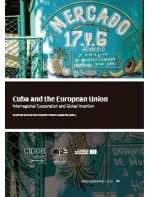Cuba between Latin America and the Caribbean: A sui generis model of international insertion

The relationship between Cuba and the EU plays out within a specific bi-regional context. Cuba retains a special status in Latin America and the Caribbean (LAC) due to its one-party system and ongoing conflict with the United States. This in turn conditions its relationship with Europe. Fitting somewhere between the “second and third worlds” during the Cold War, Cuba has a dual Caribbean and Latin American identity. This has allowed it to participate in initiatives in both geographical areas, despite its bilateral conflict with the United States and its exclusion from much of the inter-American system. This chapter explores the particular characteristics of Cuba’s regional insertion that help explain the issues it has faced with regard to inclusion in integration processes in Latin America and the Caribbean and the only partial progress made on returning it to the inter-American system. It analyses how its US-independent integration model has conditioned the relationship with neighbouring countries and the costs and benefits this has entailed. It also studies how Cuba’s relationship with Latin America and the Caribbean during and since the Cold War has influenced its relationship with the European Union. Finally, the prospects for Cuba’s full continental integration are examined in a context of crisis and the overhaul of Latin American regionalism.